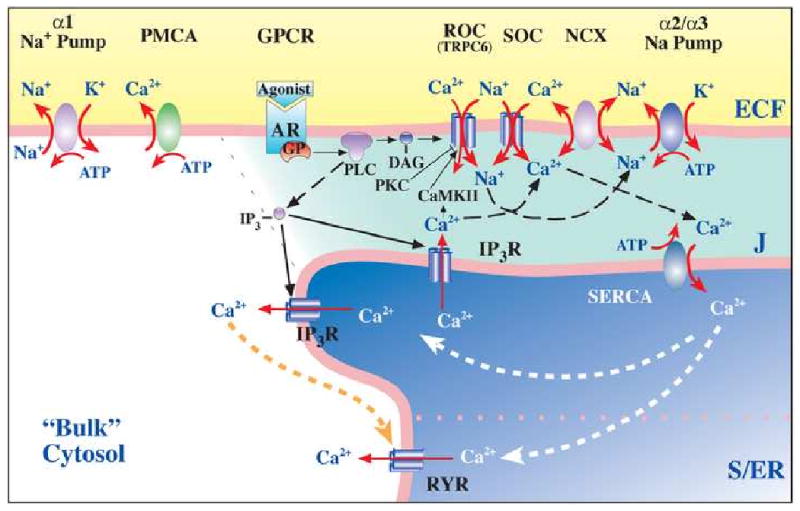Fig. 1.

Model of the plasma membrane-junctional sarco-/endoplasmic reticulum (PM-jS/ER) region, the PLasmERosome, showing the location of key transport proteins involved in local control of jS/ER Ca2+ stores and Ca2+ signaling. The PLasmERosome consists of a PM microdomain, the adjacent jS/ER (with SERCA, IP3R and ryanodine receptors, RYR), and the intervening ‘diffusion-restricted’ junctional space (J). The PM microdomain contains agonist receptors, ARs (GPCRs), ROCs and SOCs (composed of various transient receptor potential channel proteins or TRPCs), α2 (in smooth muscle) or α3 Na+ pumps, and NCX. Activation of GPCRs and release of G-proteins (GPs) stimulates phospholipase C (PLC) to produce IP3 and diacylglycerol (DAG). DAG may activate ROCs directly. Na+ may enter locally, through ROCs, SOCs or, perhaps, SACs (not shown) to promote Ca2+ entry via NCX. Shading indicates relative Na+ and/or Ca2+ concentrations. Other regions of the PM contain α1 Na+ pumps and PMCA. Other abbreviations are defined in the text. Reprinted with permission [184].
